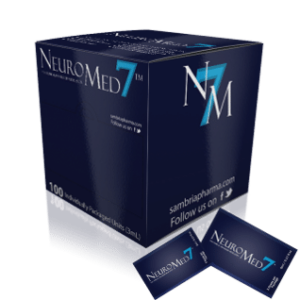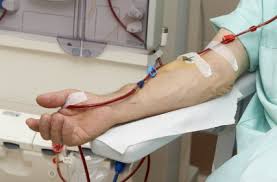Dialysis Needle Numbing
Almost no-one likes needles. But for some, needle phobia (a.k.a trypanophobia) is much more than a minor fear. It’s a terror that can scare you away from health or dental care. And if you need dialysis, you may face needles often. Learn how needle fear works—and what you can do about it, including dialysis needle numbing, among other actions.
How You Know You Have Needle Fear
Having needle fear does not mean that you are weak or child-like. It’s an involuntary response known as the vasovagal reflex. The reflex can occur if you:
- Have blood drawn
- Get an injection
- Are hurt
- See blood
- Conceptualize a clinical needle or needle stick
Needle fear is an actual emotional condition which is listed in the DSM-IV book of mental illness, as a “specific phobia.” It falls under Blood-Injection-Injury Type.
Here’s how it works:
- First, due to fear, your heart beats faster and your blood pressure goes up.
- Then, to be sure your brain gets enough blood, your heart slows down, and your blood pressure falls. Your body puts out stress hormones. Your heart rhythms may change.
- You may become pale, sweaty, nauseous, light headed, dizzy, and may pass out.
Experts believe needle fear is part learned and part genetic. 1 Many needle phobic people have had a needle trauma in their past. About 80% have a family member with the same fear. 1 You may have both – the learned fear behavior from past experience as well as the genetic predisposition to fear of needles.
At least ten percent of people are said to have needle fear.1 The real number may be higher: one study found that 27% of college students did not give blood due to needle fear.2 A study of people on dialysis found that 47% said needle phobia kept them from doing self-care treatments.3 So, if you have this problem, you’re not alone! Many others suffer from this condition as well as you.
The degree of needle fear can vary. Some people can have blood drawn or get a vaccine and not pass out-if they look away and lie flat. Others are so fearful that they avoid all needles. They may even refuse the care altogether that they need to survive. There are ways to minimize the pain associated with dialysis needle insertions.
Dialysis needle numbing cream
Among other things, dialysis needle numbing is one treatment that has increasingly grown as a common aid in reducing the pain from the needle insertion. Dialysis needle numbing is performed by applying a local, topical anesthetic (or lidocaine/numbing) cream to the treatment area prior to needle insertion. Dialysis needle numbing creams can be either prescribed by your doctor prior to your clinic visit or needle self application or can be purchased over-the-counter or online without a prescription. Dialysis numbing cream is a topical anesthetic cream (most often containing lidocaine) that can be applied by putting a small amount on the treatment area, rubbing in vigorously with a gloved hand and waiting from 15 – 60 minutes for the active ingredient to take effect.
Not all dialysis needle numbing creams are exactly the same. Dialysis needle numbing creams come in different formulations and various forms of packaging. Some formulations include technologies and ingredients included to speed the onset time as well as penetration of the active ingredients.
Most dialysis needle numbing creams are supplied in multi-use jars or tubes. NeuroMed 7 is supplied in single-use, sanitary, metered-dose 4 mL (grams by weight) packets for patient and clinician convenience.
Whichever formulation or packaging supply, the active ingredient, lidocaine, included in nearly all dialysis needle numbing creams has been shown to reduce pain by blocking pain impulse transmission to the brain.

For best prices on single tubes of NeuroMed 7 topical numbing cream go to: AMAZON STORE
PRODUCT INFORMATION for PROFESSIONAL USE



